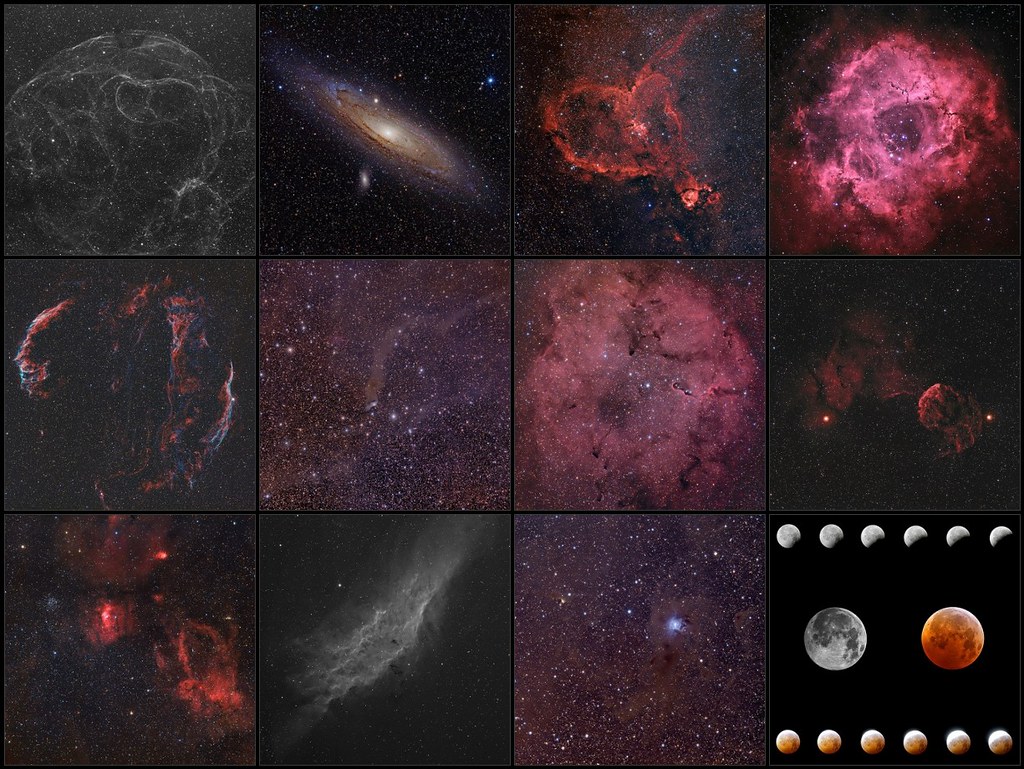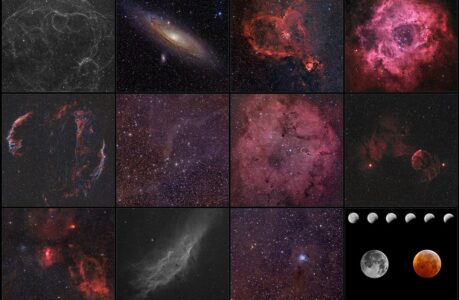Capture the cosmos with confidence by sidestepping these astrophotography gear blunders.
Are you gazing up at the night sky, yearning to capture the beauty of the cosmos with your camera? Astrophotography is a captivating hobby that allows you to immortalize the stars, planets, and distant galaxies. However, navigating the complex world of astrophotography equipment can be a daunting task, especially for beginners. To help you avoid costly mistakes and set you on the path to celestial photography success, we’ll delve into seven common blunders to sidestep when purchasing astrophotography gear.
Neglecting Research and Education
“In astrophotography, knowledge is your North Star.”
One of the most significant mistakes you can make is diving into astrophotography without first gaining a solid understanding of the craft. The night sky is a vast, intricate tapestry, and capturing its beauty requires more than just a camera. Many budding astrophotographers rush into buying equipment without fully grasping the basics of the art.
How to Avoid This Mistake:
- Read Books and Online Resources: Start by reading books, articles, and online forums dedicated to astrophotography. Websites like Cloudy Nights and Astronomy Forum offer a wealth of information from experienced astrophotographers.
- Take Online Courses: Consider enrolling in online courses or workshops that cover the fundamentals of astrophotography. Platforms like Udemy and Coursera offer relevant courses to help you kickstart your learning journey.
- Join a Local Astronomy Club: Local astronomy clubs often host workshops and star parties, providing opportunities to learn from experienced photographers.
By investing time in research and education, you’ll build a strong foundation and make more informed decisions when it’s time to select your equipment.
Choosing the Wrong Telescope
“Selecting the right telescope is like choosing the perfect brush for a masterpiece.”
The telescope is the heart of your astrophotography setup, and choosing the wrong one can be a costly mistake. Many beginners make the error of purchasing a telescope that doesn’t suit their specific needs or skill level.
How to Avoid This Mistake:
- Understand Telescope Types: Learn about the different types of telescopes, such as refractors, reflectors, and compound telescopes. Each has its strengths and weaknesses for astrophotography.
- Consider Aperture and Focal Length: A telescope’s aperture determines its light-gathering ability, while focal length impacts magnification. Consider your target objects and desired results when selecting these parameters.
- Factor in Portability: If you plan to travel to dark sky locations, portability becomes crucial. Smaller, lightweight telescopes are easier to transport and set up.
- Read Reviews and Seek Advice: Read reviews from experienced astrophotographers and seek advice from astronomy communities before making a purchase. They can offer valuable insights into specific telescope models.
Overlooking the Mount
“A stable mount is the unsung hero of astrophotography.”
The mount is often underestimated by beginners, but it’s a critical component of your astrophotography setup. A shaky or inadequate mount can ruin your long-exposure images by causing blurriness and star trails.
How to Avoid This Mistake:
- Prioritize Stability: Invest in a sturdy equatorial or computerized mount that can support your telescope and camera equipment. Look for a mount with a high weight capacity to accommodate future upgrades.
- Consider Guiding: Autoguiding systems help compensate for mount inaccuracies, resulting in sharper images. Budget for guiding equipment and software in your setup.
- Learn Polar Alignment: Properly aligning your mount with the North Star (for northern hemisphere observers) or the South Celestial Pole (for southern hemisphere observers) is crucial. Mastering polar alignment improves tracking accuracy.
Ignoring the Camera
“Your camera is your canvas; choose it wisely.”
Your camera is the instrument through which you capture the wonders of the universe. Ignoring its importance or selecting the wrong camera can hinder your astrophotography endeavors.
How to Avoid This Mistake:
- Consider Sensor Size: Cameras with larger sensors generally perform better in low-light conditions, which is essential for astrophotography. Full-frame cameras are a popular choice among astrophotographers.
- Low Noise Performance: Look for cameras with excellent low-noise performance at high ISO settings. Noise can degrade the quality of your astrophotos.
- Compatibility with Your Telescope: Ensure your camera is compatible with your telescope and accessories. Consider investing in a T-ring and T-adapter for secure connections.
- Research Astrophotography Modifications: Some cameras can be modified for astrophotography by removing the built-in IR filter, allowing them to capture more of the hydrogen-alpha spectral line. Research if this modification is suitable for your camera model.
Skimping on Astrophotography Accessories
“Accessories are the small details that make a big difference.”
Building a comprehensive astrophotography kit involves more than just a telescope and camera. Neglecting essential accessories can limit your capabilities and the quality of your images.
How to Avoid This Mistake:
- Invest in Quality Eyepieces: If you plan to use your telescope for visual observations as well, invest in a set of quality eyepieces. They make a significant difference in the clarity of your views.
- Consider Filters: Filters like light pollution filters and narrowband filters can enhance your astrophotos by reducing light pollution and isolating specific wavelengths of light from celestial objects.
- Don’t Forget about Power: Ensure you have a reliable power source, such as a portable power pack or battery, to keep your equipment running throughout the night.
- Explore Focusing Aids: Tools like Bahtinov masks and electronic focusers can simplify the critical task of achieving precise focus in the dark.
Rushing to Buy Everything
“Patience is a virtue in astrophotography.”
The excitement of starting a new hobby can lead to impulsive buying decisions. Rushing to purchase every piece of equipment at once can strain your budget and leave you overwhelmed.
How to Avoid This Mistake:
- Start with the Essentials: Begin with the basic equipment, such as a telescope, mount, and camera. Learn to use them effectively before adding more specialized accessories.
- Budget Wisely: Create a budget that allows you to invest in quality equipment while leaving room for upgrades as you gain experience.
- Rent Before You Buy: Consider renting or borrowing equipment before making a permanent commitment. This allows you to test different gear and find what suits you best.
Neglecting Post-Processing Software
“The magic often happens on the computer screen.”
Astrophotography doesn’t end when you pack up your equipment. The post-processing stage is where you transform your raw images into stunning astrophotos. Neglecting this aspect can lead to lackluster results.
How to Avoid This Mistake:
- Learn Image Processing: Invest time in learning astrophotography post-processing techniques. Software like Adobe Photoshop, PixInsight, and DeepSkyStacker are commonly used for this purpose.
- Shoot in RAW: Always shoot in RAW format to retain the maximum amount of data in your images. RAW files provide more flexibility during post-processing.
- Calibrate and Stack Images: Calibrating your images (removing biases, flats, and dark frames) and stacking them can significantly improve image quality, reducing noise and enhancing details.
- Practice Patience: Post-processing is an art that takes time to master. Be patient and experiment with different techniques to find your unique style.
In conclusion, astrophotography is a rewarding hobby that allows you to explore the wonders of the universe through the lens of your camera. By avoiding these common mistakes, you can set yourself up for success and capture breathtaking images of the cosmos. Remember that astrophotography is a journey of continuous learning and improvement, so embrace the challenges and enjoy the process of honing your skills and expanding your equipment arsenal. Happy stargazing!

